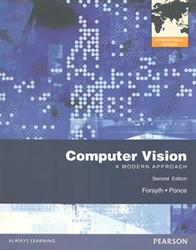Simulation Modeling and Analysis, 5/e (IE-Paperback)
暫譯: 模擬建模與分析,第5版 (IE-平裝本)
Averill Law (author)
- 出版商: McGraw-Hill Education
- 出版日期: 2014-06-16
- 售價: $1,150
- 貴賓價: 9.8 折 $1,127
- 語言: 英文
- 頁數: 800
- 裝訂: Paperback
- ISBN: 1259254380
- ISBN-13: 9781259254383
-
相關分類:
管理與領導 Management-leadership
-
其他版本:
Simulation Modeling and Analysis
立即出貨 (庫存 < 3)
買這商品的人也買了...
-
 LabVIEW for Everyone: Graphical Programming Made Easy and Fun, 3/e (Hardcover)
LabVIEW for Everyone: Graphical Programming Made Easy and Fun, 3/e (Hardcover)$3,540$3,363 -
 Semi-Supervised Learning (Paperback)
Semi-Supervised Learning (Paperback)$1,880$1,786 -
 $1,560Physically Based Rendering : From Theory To Implementation, 2/e (Hardcover)
$1,560Physically Based Rendering : From Theory To Implementation, 2/e (Hardcover) -
 資料庫系統原理 (Fundamentals of Database Systems, 6/e)
資料庫系統原理 (Fundamentals of Database Systems, 6/e)$890$703 -
 $1,501Jenkins: The Definitive Guide
$1,501Jenkins: The Definitive Guide -
iOS 射擊遊戲程式實務
$580$452 -
 Computer Vision: A Modern Approach, 2/e (IE-Paperback)
Computer Vision: A Modern Approach, 2/e (IE-Paperback)$1,250$1,225 -
40 條彩色排線 20cm 母對母
$100$95 -
 $2,533Next Generation Knowledge Machines: Design and Architecture (Hardcover)
$2,533Next Generation Knowledge Machines: Design and Architecture (Hardcover) -
 R 錦囊妙計 (R Cookbook)
R 錦囊妙計 (R Cookbook)$680$537 -
 Linear Algebra: Algorithms, Application, and Techniques, 3/e (Paperback)
Linear Algebra: Algorithms, Application, and Techniques, 3/e (Paperback)$1,120$1,098 -
 Continuous Delivery 中文版:利用自動化的建置、測試與部署完美創造出可信賴的軟體發佈 (Continuous Delivery: Reliable Software Releases through Build, Test, and Deployment Automation)
Continuous Delivery 中文版:利用自動化的建置、測試與部署完美創造出可信賴的軟體發佈 (Continuous Delivery: Reliable Software Releases through Build, Test, and Deployment Automation)$650$507 -
 $1,260Predictive Analytics and Data Mining: Concepts and Practice with RapidMiner (Paperback)
$1,260Predictive Analytics and Data Mining: Concepts and Practice with RapidMiner (Paperback) -
 Android 程式設計入門、應用到精通--增訂第三版 (適用 5.X~1.X, Android Wear 穿戴式裝置)
Android 程式設計入門、應用到精通--增訂第三版 (適用 5.X~1.X, Android Wear 穿戴式裝置)$560$442 -
 Kali Linux 滲透測試工具
Kali Linux 滲透測試工具$490$387 -
 Power Generation, Operation and Control, 3/e (Hardcover)
Power Generation, Operation and Control, 3/e (Hardcover)$6,550$6,223 -
 LinkIt ONE 物聯網實作入門
LinkIt ONE 物聯網實作入門$280$252 -
 四軸飛行器自造手冊
四軸飛行器自造手冊$299$236 -
 百億次的使用經驗:網路運維管理極精華 250 篇
百億次的使用經驗:網路運維管理極精華 250 篇$720$612 -
 達標!Windows 10
達標!Windows 10$520$442 -
 Enchanted Objects: Innovation, Design, and the Future of Technology (Paperback)
Enchanted Objects: Innovation, Design, and the Future of Technology (Paperback)$960$912 -
 人人都是網站分析師|看穿網站流量的祕密
人人都是網站分析師|看穿網站流量的祕密$380$300 -
 Android Hacker's Handbook 駭客攻防聖經 (Android Hacker's Handbook)
Android Hacker's Handbook 駭客攻防聖經 (Android Hacker's Handbook)$690$538 -
 Joomla! 3 精彩解說 (Joomla! 3 Explained: Your Step-by-Step Guide, 2/e)
Joomla! 3 精彩解說 (Joomla! 3 Explained: Your Step-by-Step Guide, 2/e)$500$425 -
 $990Python for Data Analysis: Data Wrangling with Pandas, NumPy, and IPython, 2/e (Paperback)
$990Python for Data Analysis: Data Wrangling with Pandas, NumPy, and IPython, 2/e (Paperback)
相關主題
商品描述
Since the publication of the first edition in 1982, the goal of Simulation Modeling and Analysis has always been to provide a comprehensive, state-of-the-art, and technically correct treatment of all important aspects of a simulation study. The book strives to make this material understandable by the use of intuition and numerous figures, examples, and problems. It is equally well suited for use in university courses, simulation practice, and self study. The book is widely regarded as the a€œbiblea€ of simulation and now has more than 100,000 copies in print. The book can serve as the primary text for a variety of courses; for example:
Features
Table of Contents
1 Basic Simulation Modeling
2 Modeling Complex Systems
3 Simulation Software
4 Review of Basic Probability and Statistics
5 Building Valid, Credible, and Appropriately Detailed Simulation Models
6 Selecting Input Probability Distributions
7 Random-Number Generators
8 Generating Random Variates
9 Output Data Analysis for a Single System
10 Comparing Alternative System Configurations
11 Variance-Reduction Techniques
12 Experimental Design, Sensitivity Analysis, and Optimization
13 Agent-Based Simulation and System Dynamics
14 Simulation of Manufacturing Systems
商品描述(中文翻譯)
自1982年第一版出版以來,《模擬建模與分析》的目標始終是提供一個全面、最先進且技術上正確的模擬研究所有重要方面的處理。本書努力通過直觀的方式以及大量的圖示、範例和問題,使這些材料易於理解。它同樣適合用於大學課程、模擬實踐和自學。本書被廣泛認為是模擬的“聖經”,目前已印刷超過100,000本。本書可以作為多種課程的主要教材,例如:
- 在工程、製造、商業或計算機科學領域的初級、高級或研究生入門級模擬課程(第1至第4章,以及第5至第9章的部分內容)。在這樣的課程結束時,學生將能夠進行完整且有效的模擬研究,並準備參加進階模擬課程。
- 針對上述學科的研究生的第二門模擬課程(第5至第12章的大部分內容)。完成此課程後,學生應該熟悉模擬研究中涉及的更高級方法論問題,並應準備理解和進行模擬研究。
- 作為運籌學或管理科學一般課程的一部分的模擬介紹(第1、3、5、6和9章的部分內容)。
**特色**
- 附贈包含ExpertFit分佈擬合軟體的學生版CD-ROM,並與本書相關聯。
- 最新模擬軟體的更新處理,包括四個主要產品中的共同範例。
- 本書中使用的所有軟體已升級至FORTRAN和C。
- 20%的新問題和範例。
- 更全面和實用的模擬模型驗證討論。
- 新增和改進的隨機數生成器。
- 最新的統計技術,用於估計模擬系統的性能指標,適用於終止和穩態模擬。
- 用於選擇最佳系統配置的排名和選擇程序,允許使用共同隨機數以提高效率。
- 更詳細的討論如何在實踐中使用共同隨機數的方法。
- 大幅擴展且自成一體的經典實驗設計討論,特別強調如何在模擬建模的背景下正確實施這些技術。
- 幾個有關基於模擬的優化使用的詳細範例。
**目錄**
1. 基本模擬建模
2. 複雜系統建模
3. 模擬軟體
4. 基本概率與統計回顧
5. 建立有效、可信且適當詳細的模擬模型
6. 選擇輸入概率分佈
7. 隨機數生成器
8. 生成隨機變量
9. 單一系統的輸出數據分析
10. 比較替代系統配置
11. 方差減少技術
12. 實驗設計、敏感度分析與優化
13. 基於代理的模擬與系統動力學
14. 製造系統的模擬














